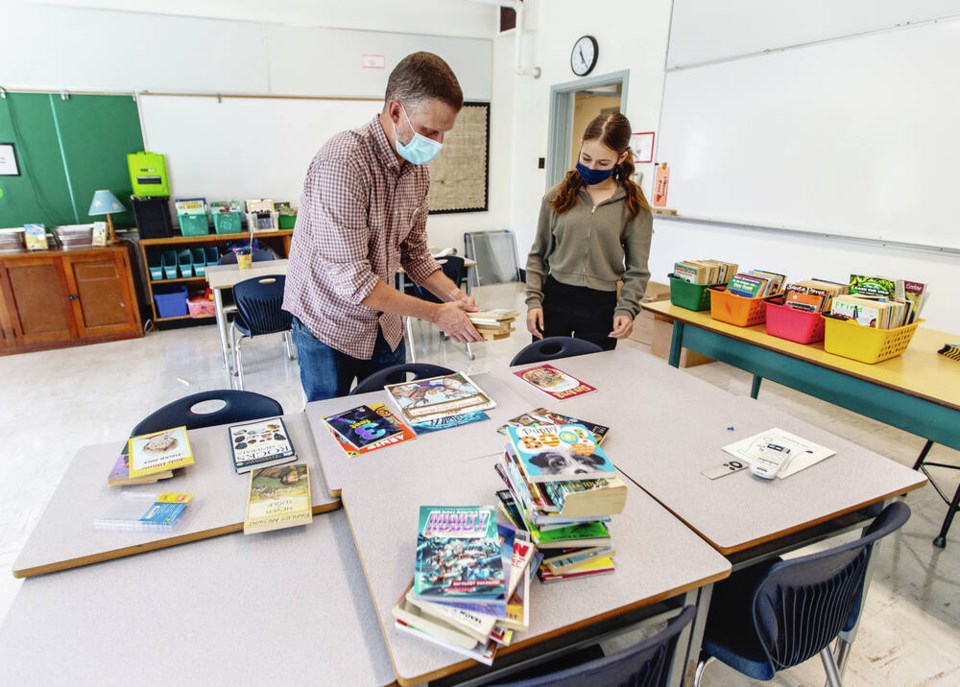Right now, there is an emerging teacher shortage in saąúĽĘ´«Ă˝
Depending on whose numbers you accept, the province’s 60 school districts are running with at least 500 teachers fewer than needed.
Some districts, especially in the Interior, are facing such a severe shortage of teachers that they are advertising on social media for non-certified teacher “replacements” to supervise if not instruct classes.
Let’s take North Okanagan-Shuswap SD83 as just one example. I know the district well, having worked there for several years as assistant superintendent in the 1980s.
The area is a highly desirable summer and winter outdoor-oriented region which was always attractive to young teachers.
But now, in a post shared widely on Facebook, the school district says it is hiring people without teaching certification to do on-call work that matches the description of a typical teaching job.
“Teacher replacements are needed at the elementary, middle and secondary level with specialized disciplines such as music, arts education, French immersion, applied design, skills and technologies, mathematics & science, English language arts, social studies and physical and health education,” reads the online ad posted by the district.
So why aren’t young, newly minted teachers flocking to places like the North Okanagan and Shuswap?
One major reason is the widening differential between teacher compensation and the chances of qualifying for a mortgage and buying a house, not just in the North Okanagan, but almost anywhere in saąúĽĘ´«Ă˝
The average teacher salary in SD83 today ranges from $58,705 to $88,630, depending on qualifications and years of experience.
But the average house price in the North Okanagan-Shuswap for a single family home is $693,800. That’s nearly eight times the highest teacher salary and nearly twelve times the starter salary.
Back in 1972, as a young teacher in the Lower Mainland, I bought my first house for $17,000, or 1.7 times my gross salary of $10,000.
In other words, as a teacher in 1972, I could afford a house in the Lower Mainland — or pretty much anywhere else in saąúĽĘ´«Ă˝ — but not anymore.
Other reasons for the reduced number of currently available teachers in saąúĽĘ´«Ă˝ include the rising number of teacher retirements and the reduction in applicant interest as a result of those considering a career in teaching seven or eight years ago being told there were no jobs.
COVID-19 only made the problem worse.
As it became clear that the COVID virus had taken hold across the saąúĽĘ´«Ă˝ population by September 2020, some teachers chose to prioritize their health and families and took leave from which they did not return to the profession. Others chose early retirement, and some, who under normal circumstances might have registered as substitute teachers, chose not to do so.
The anxiety about the risks educators were exposed to in improperly ventilated classrooms full of 25 or more coughing sneezing kids were increased by the uncertainties of shifting public health guidelines and hastily devised school district policies about masks, hand-washing and social-distancing for 25-30 kids in 80 square-metre classrooms.
For the first time, what had always been dismissed as a negotiations tactic, talking about “teacher burnout” became a reality, and researchers such as Rob Tierney, a professor in the department of language and literacy education in UBC’s Faculty of Education, began to talk more about why teachers burnout and what schools can do to retain them.
I have never been skeptical about teacher burnout. I have seen its effects too many times during a long career. Sometimes, as an elementary school principal, I would bring in a variety of people, from local policemen to business leaders, to speak to and with the kids about what they, the speakers, did and why.
Inevitably as they came by my office upon leaving, they said the same thing: “You mean you guys do this for five hours a day for 190 days each year — that’s intense, how do you do it?”
One preventative remedy for teacher burnout is Australia’s legislated opportunity for employees (including teachers) who have been in the same job for seven years to avail themselves of a fully paid leave. This entitlement forms part of the National Employment Standards in Oz. An employee is entitled to an amount of long-service leave on ordinary pay equal to 1/60th of the period of continuous employment, or about 6.1 weeks after seven years.
Obviously this practice, enshrined in Australian working life, raises a number of questions and those will be grist for a future column.
Geoff Johnson is a former superintendent of schools.



